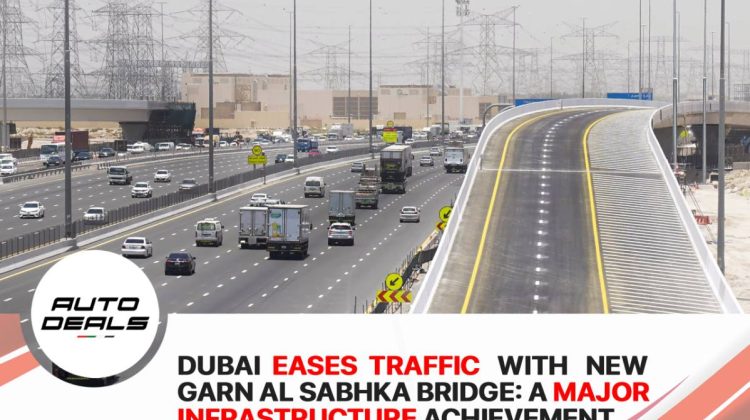Dubai Eases Traffic with New Garn Al Sabkha Bridge: A Major Infrastructure Achievement
Transforming Urban Mobility
Dubai’s commitment to enhancing its transportation infrastructure has taken another significant step with the inauguration of the Garn Al Sabhka Bridge. This new addition, spearheaded by the Roads and Transport Authority (RTA), is designed to alleviate traffic congestion and improve connectivity in key city areas. By integrating this major bridge, Dubai continues to build on its reputation as a global leader in smart urban planning and development.
Key Features and Impact of the Garn Al Sabhka Bridge
The Garn Al Sabhka Bridge is strategically positioned to serve as a vital link between several major thoroughfares and districts, promising to transform the daily commute for thousands of residents and visitors.
Strategic Location and Connectivity
- Crucial Link: The bridge connects Sheikh Mohammed bin Zayed Road with Al Yalayis Road, facilitating direct and efficient travel between critical areas like the Dubai Investment Park and Jebel Ali Free Zone.
- Major Roads Integration: By linking to significant roads such as Al Khail Road and Emirates Road, the bridge helps distribute traffic more evenly, reducing pressure on existing routes.
Design and Capacity
- High Capacity: The bridge is built with multiple lanes in each direction, designed to accommodate the high traffic volumes typical of Dubai’s busy roadways. This multi-lane design is expected to significantly reduce congestion and improve traffic flow.
- Modern Engineering: Utilizing the latest construction technologies and materials, the bridge ensures durability and safety. It is constructed to meet international standards, and capable of handling the dynamic demands of urban traffic.
Enhanced Access
- Convenience: The bridge offers improved access to several important residential and commercial areas, streamlining travel for commuters and facilitating better connectivity for businesses.
- Reduced Travel Times: By providing a more direct route between major roads, the bridge is expected to cut down travel times significantly, enhancing the efficiency of both personal and commercial transport.
Broader Implications for Dubai’s Traffic and Economy
The opening of the Garn Al Sabhka Bridge is poised to deliver multiple benefits beyond just easing traffic congestion. Its strategic importance and functionality are anticipated to impact the city’s economic and social fabric.
- Economic Growth: Improved access and reduced travel times can boost economic activities by facilitating smoother logistics and attracting more businesses to the connected areas. This is particularly beneficial for hubs like the Jebel Ali Free Zone.
- Quality of Life: By reducing daily commute times and traffic stress, the bridge contributes to a higher quality of life for residents. Additionally, the reduced congestion can lead to lower emissions, supporting Dubai’s environmental goals.
Supporting Dubai’s Vision for a Smart and Sustainable City
The Garn Al Sabhka Bridge aligns with Dubai’s vision to develop a smart, sustainable, and interconnected city. This project is part of the RTA’s broader initiative to create a seamless transportation network that supports the city’s rapid growth and dynamic lifestyle.
- Smart Mobility Solutions: The bridge is a part of the ongoing efforts to implement smart mobility solutions that facilitate efficient and sustainable urban living. It reflects Dubai’s proactive approach to addressing the challenges of urbanization.
- Future-Ready Infrastructure: This infrastructure project is designed to cater to current and future demands, ensuring that Dubai remains well-equipped to handle the increasing transportation needs of its residents and visitors.
Looking Ahead
With the Garn Al Sabhka Bridge now operational, Dubai is better positioned to manage its urban traffic and enhance the overall efficiency of its transport network. The RTA’s dedication to continuous improvement and investment in infrastructure projects like this one is crucial for supporting the city’s growth and maintaining its status as a global metropolis.
